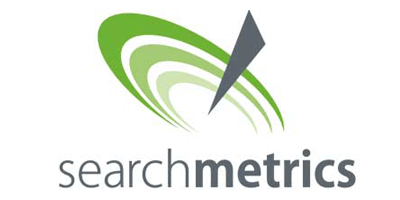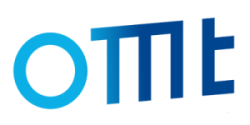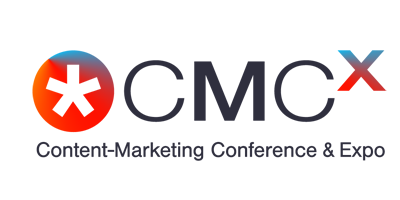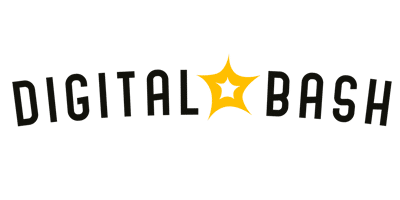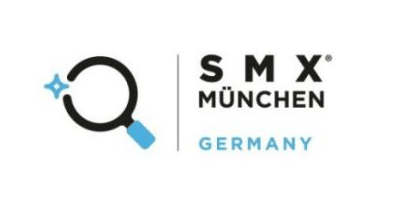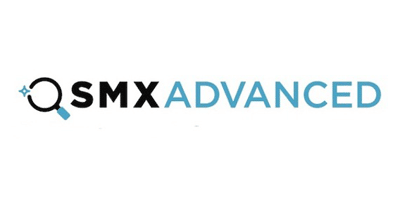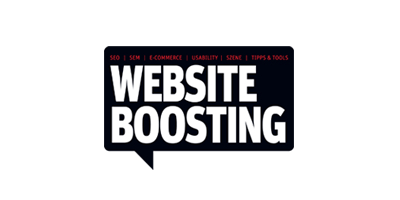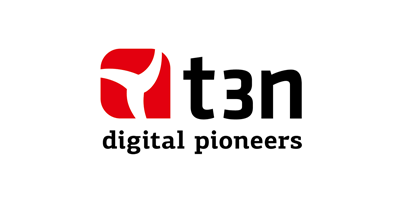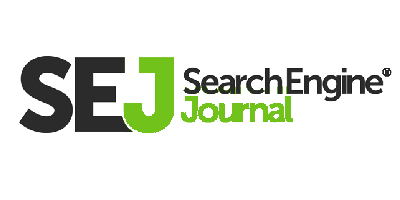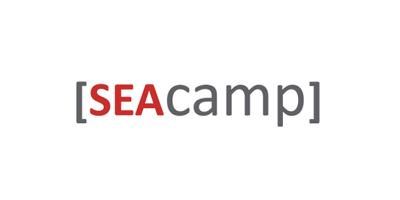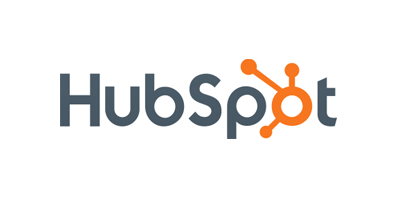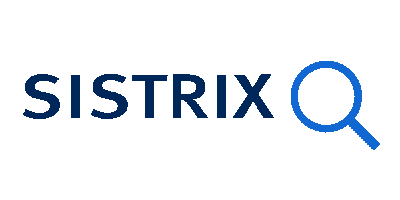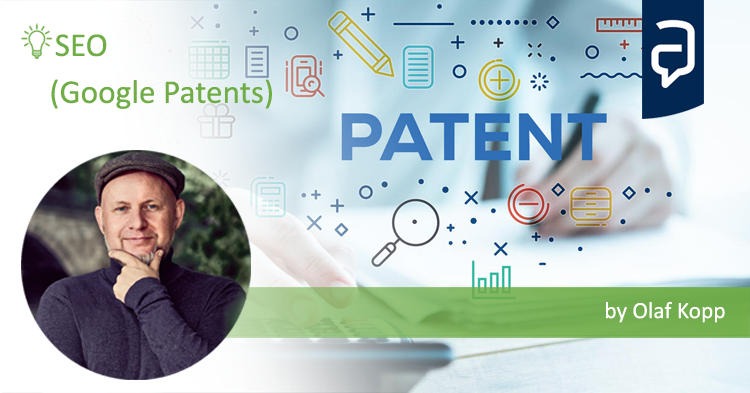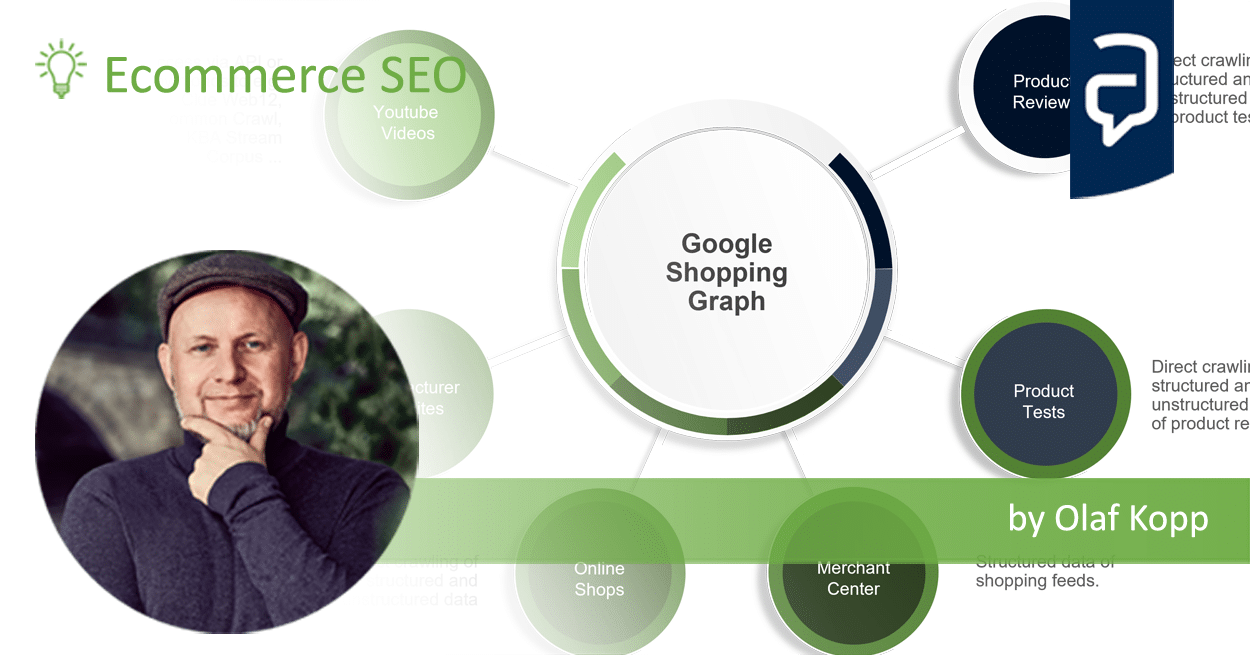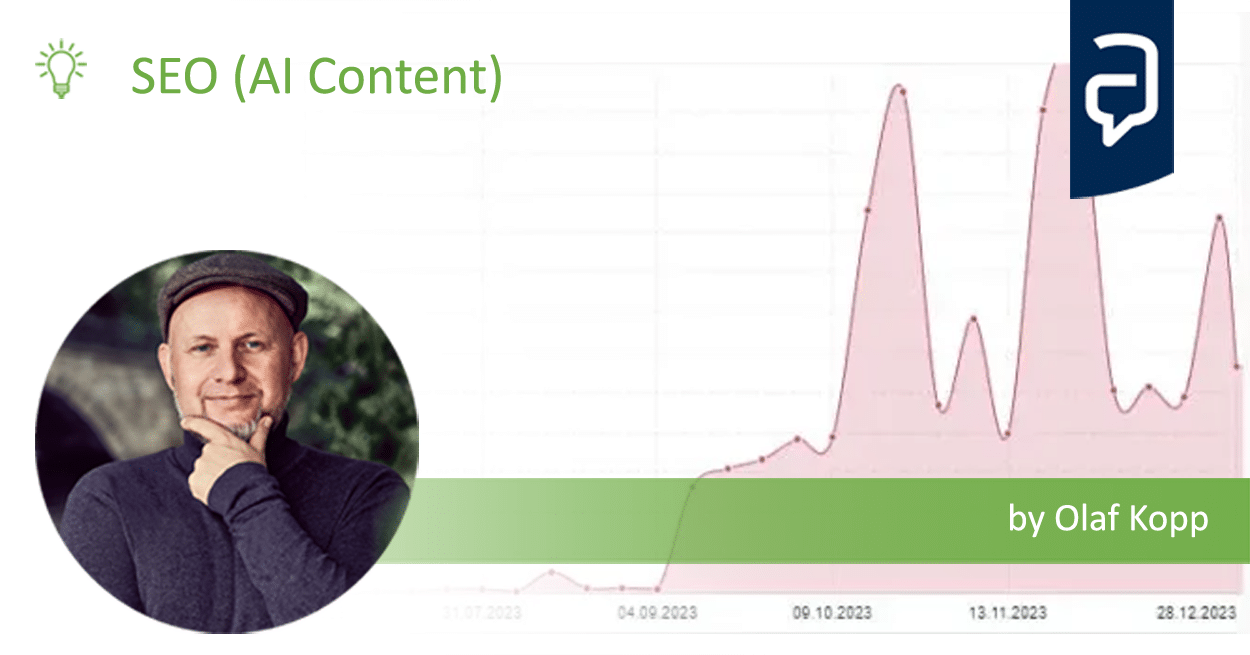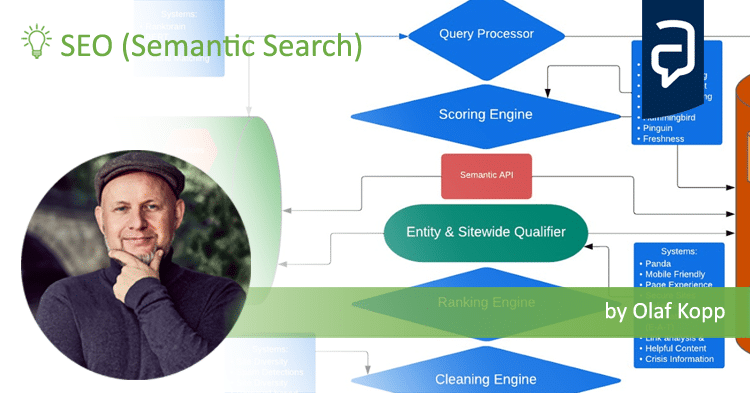How does Google search (ranking) may be working today
Google has disclosed information about its ranking systems. With this information, my own thoughts and research, e.g. in Google patents and other ressources, I want to put the pieces of the puzzle together in this article to form an overall picture.
I do not go into ranking factors in detail and their weighting, more into functionallity.
Disclaimer: Some assumptions in this post are based on my own thoughts and assumptions, all developed from various sources.
Here ary my overview and summarization of the most interesting Google patents since 2014:
- E-E-A-T: Google ressources, patents and scientific papers
- Most interesting Google Patents for SEO in 2023
- Interesting Google patents for search and SEO in 2024
- Most interesting Google Patents for semantic search
- Patents and research papers for deep learning & ranking by Marc Najork
Contents
- 1 Why should SEOs concern themselves with how search engines / Google work?
- 2 Process steps for information retrieval, ranking and knowledge discovery at Google
- 3 Indexing and Crawling
- 4 Which Google indexes are there?
- 5 The search revolution through Vector Search
- 6 Google search as an hybrid system of lexical and semantic search
- 7 Classification of new content and guarantee an information gain
- 8 Search Query Processing
- 9 Ranking Search Results
- 10 Google ranking systems
- 11 Deep Learning models and other components for ranking
- 12 How do the different ranking systems work together?
- 13 More posts on how Google works
Why should SEOs concern themselves with how search engines / Google work?
I don’t think it makes sense to only deal with ranking factors and possible optimization tasks without understanding how a modern search engine like Google works. There are many myths and speculations in the SEO industry that are blindly followed unless you have your own ranking experience. In order to assess myths in advance, it helps to deal with the technology and basic functioning of Google. This post should help you with that and and summarizes my thoughts with reference to statements made by Google, Google patents and the Antit Trust proceedings against Google and the statements of Googles Pandu Nayak.
Process steps for information retrieval, ranking and knowledge discovery at Google
According to the explanations in the excellent lecture “How Google works: A Google Ranking Engineer’s Story” by Paul Haahr, Google distinguishes between the following process steps:
Before a query:
- Crawling
- Analyzing crawled pages
- Extract links
- Render contents
- Annotate semantics
- …
- Indexing
Search Query Processing
-
- Query understanding
- Retrieval and scoring
- post retrieval adjustments
Indexing and Crawling
Indexing and crawling is the basic requirement for ranking, but otherwise has nothing to do with ranking content.
Google crawls the internet via bots every second. These bots are also called crawlers. The Google bots follow links to find new documents/content. But URLs that are not shown in the html code and perhaps! URLs entered directly in the Chrome browser can also be used by Google for crawling.
If the Google Bot finds new links, these are collected in a scheduler so that they can be processed later.
Domains are crawled with varying frequency and completeness, or different crawling budgets are allocated to domains. PageRank used to be an indication of the crawl intensity attributed to a domain. In addition to external links, other factors can also include publishing frequency and update frequency as well as the type of website. News pages that take place on Google News are usually crawled more frequently. According to Google, there are no problems with crawling budgets up to around 10,000 URLs. In other words, most websites have no problem being fully crawled.
Indexing takes place in two stages.
- In the first step, the pure html code is first processed with a parser in such a way that it can be transferred to an index in a resource-saving manner. In other words, the first indexed version of content is a pure html not rendered site. This saves Google time when crawling and thus also when indexing.
- In a second later step, the indexed html version is rendered, i.e. displayed like this. how the user sees it in a browser.
If Google has general problems with the indexing and crawling systems, you can monitor them in the Official Google Search Status Dashboard see.

The classical Indexing process could be segmented in two parts:
- Index Creation: Search engines crawl the web to find documents (web pages, PDFs, etc.) and create an index, which is a massive database of words, phrases, and their associated documents. This index allows the search engine to quickly retrieve documents related to a given query.
- Document Features: Each document in the index is analyzed for specific features, such as the presence and distribution of keywords, the document’s structure (e.g., titles, headings, and links), and other signals that might indicate its relevance to certain topics or queries. These features could be query dependent and independent.
Which Google indexes are there?
With Google, a basic distinction can be made between three types of index.
Classic search indexes
The classic search index contains all content that Google can index. Depending on the type of content, Google also differentiates between the so-called vertical indices such as classic document index (text), image index, video index, flights, books, news, shopping, finance. The classic search index consists of thousands of shards containing millions of websites. Due to the size of the index, it is possible to compile the top n documents/content per shard very quickly due to the parallel queries of the websites in the individual shards.

Knowledge Graph
The Knowledge Graph is Google’s semantic entity index. All information about entities and their relationships to each other is recorded in the Knowledge Graph. Google obtains information about the entities from various sources.
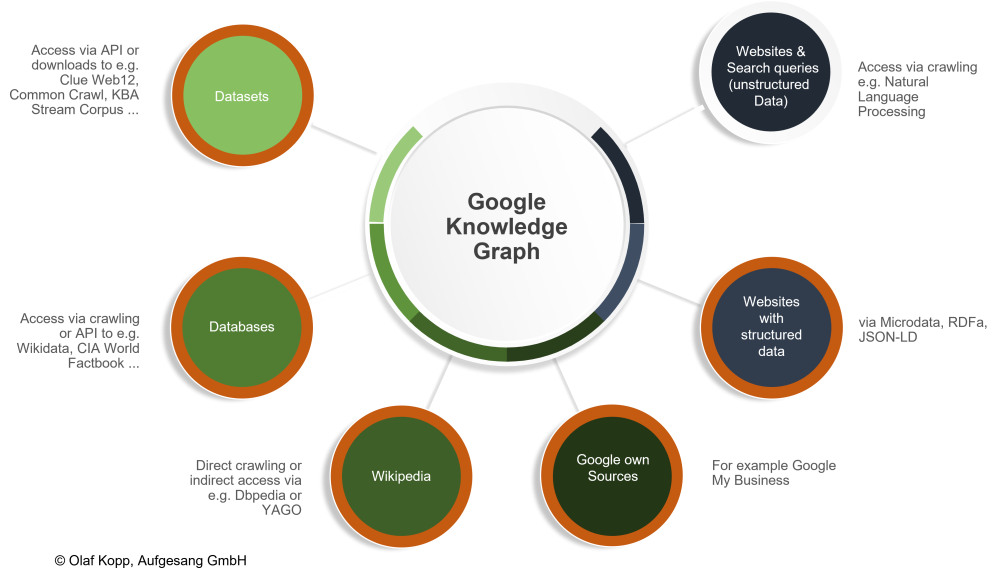
Using natural language processing, Google is increasingly able to extract unstructured information from search queries and online content in order to identify entities or assign data to entities. With MUM, Google can not only use text sources for this, but also images, videos and audios. More Info about Natural Language Based Search here.
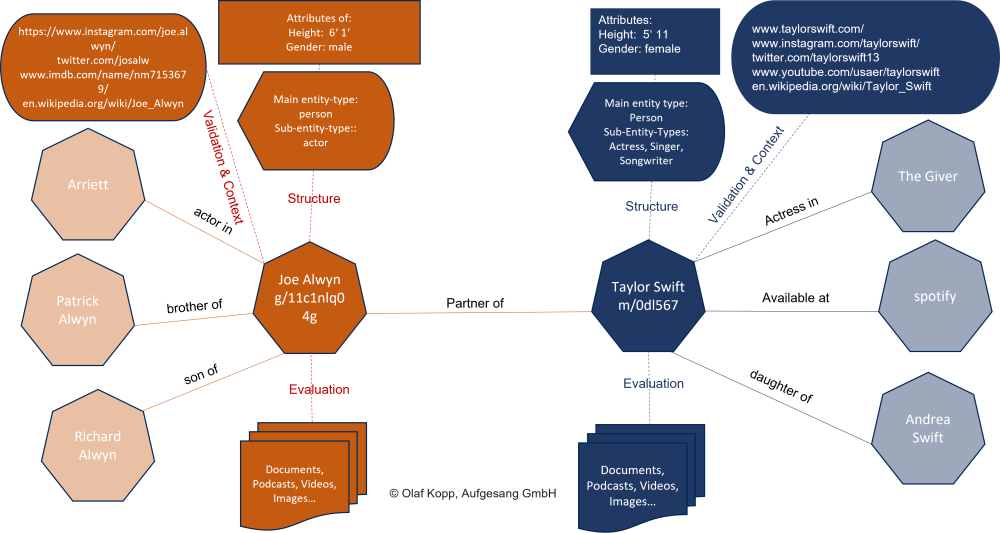
For data mining Google can use both a query processor and a kind of entity processor or semantic entity API between the classic search index. (see also the Google patent “Search Result Ranking and Representation”)
LLM, vector index and vector database
The newest of kind of index Google uses to store and understanding Information are Large Language Models (LLMs) and and associated vector databases. Since the introduction of BERT in 2018, Google has been using LLMs to perform similarity calculations in vector spaces. Since the launch of Rankbrain in 2015, Google has used processes such as Word2Vec to convert words and other elements into vectors.
Google will increasingly use vector databases or vector indexes in the future for organization and ranking.
Vector databases are specialized databases designed to efficiently store, search, and manage vectors (representations of data in high-dimensional spaces). These vectors can represent a variety of data types, such as images, text, audio, or other complex data types that have been transformed into a vector space.
In the context of machine learning and artificial intelligence (AI), data is often represented as vectors to identify similarities and relationships between different data elements. Vector databases leverage this approach to support high-dimensional queries efficiently. They are particularly useful in applications like semantic searches, recommendation systems, facial recognition, and other AI-driven features.

A key feature of vector databases is their ability to perform similarity searches. This means they can find data elements similar to a given example or query based on the distance between vectors in the high-dimensional space. This distance can be measured using various metrics, such as Euclidean distance or cosine similarity.
Vector databases also offer specialized indexing and storage strategies to make the search and retrieval of high-dimensional data efficient. They can be implemented both in the cloud and on-premises and often support scalable and distributed architectures to handle large datasets.
Hybrid solutions out of KGs and LLMs
There is currently a race for the organization of knowledge between knowledge graphs on the one hand and large language models (LLMs) on the other. Recent developments suggest that a combination of both systems is an optimal solution. In the future, knowledge vector graphs could be the advantages of a symbolic semantic database such as the knowledge graph and highly scalable LLMs.

The limitations of LLMs are their lack of domain knowledge and leading to stale or inaccurate responses. To address this, the concept of Retrieval-Augmented Generation (RAG) is introduced, which enriches LLMs with external knowledge bases. However, RAG faces practical challenges, such as data processing and integration complexities.
The solution proposed involves the use of vector databases for efficient information retrieval through vector similarity search. Despite its advantages, this approach has its own set of challenges, including the non-transitivity of vector similarity, which complicates the accurate retrieval of relevant information.
To overcome these obstacles the concept of a Knowledge Vector Graph as a novel RAG architecture that combines vector databases with graph databases could be a solution. This approach aims to provide a more nuanced and comprehensive method for connecting disparate pieces of knowledge, thereby enhancing the LLM’s ability to generate accurate and contextually rich responses.

In 2024 Google introduced Exphormer: Scaling transformers for graph-structured data, which brings the world of graphs and transformers together. Exphormer is a smart solution that lets transformers handle big graphs without getting overwhelmed. It does this by being picky about which connections to pay attention to, using something called “expander graphs.” These are special because they have just enough connections to ensure no information is lost, but not so many that the transformer gets bogged down.

The Exphormer framework addresses scalability by introducing a sparse attention mechanism specifically designed for graph data. It utilizes expander graphs, which are sparse yet well-connected, allowing for efficient computation and memory usage.
The search revolution through Vector Search
Vector Search is gaining popularity due to its ability to work with complex objects represented as high-dimensional vectors.
It offers a deeper learning approach, understanding the semantics of queries, which is crucial for matching meaning with intent. Vector Search can search across different data formats, such as text, images, audio, and video, enabling it to understand contextual relationships and deliver relevant answers quickly. So Google could introduce MUM in 2021 as powerful new deep learning system.
Vector Search allows users to factor in context when performing queries, ensuring relevance and context go hand in hand.
Users can find information that is broader in scope than a specific query, providing precise and nuanced answers without sifting through long lists of results.
Implementing Vector Search can be challenging, requiring the integration of various components like a large language model, vector database, and frameworks. Vector Search empowers Google with neural pathways for cognitive recall, supporting contextual decision-making.
It enables Google to build natural semantic search into applications, improving user interaction and providing timely information.
Embedding vectors
Enter the world of Deep Learning, a smart area of computer science that helps computers really “get” what data means on a deeper level, much like how our brains work. Deep Learning uses something called neural networks, which are designed to mimic how human brains operate. These networks have layers, starting from the input (what you feed into the computer) to the output (what the computer understands or predicts about the input).
Here’s where embedding vectors come into play. When a computer looks at a piece of data, like a photo of a dog, it doesn’t see “dog” the way we do. Instead, it converts the photo into a long list of numbers, called an embedding vector. Each number in this list represents different features or aspects of the photo, such as whether there’s a dog in it, if the sky is blue, or if there’s a tree in the background.
Imagine trying to describe the essence of a photo with just numbers. That’s what embedding vectors do, but in a way that computers can understand and work with. These vectors allow computers to compare and search through different types of data by looking at how similar their numbers are, rather than relying on matching exact words. So, even if two pictures look quite different to us, the computer might find their embedding vectors very similar, meaning they share a lot of features.
In short, embedding vectors are like a universal language for computers to understand and search all sorts of data based on what it really means, not just what it says or appears to be on the surface. This opens up a whole new world of possibilities for searching and organizing information in ways that were not possible before.
Embedding vectors are a key component in transitioning from traditional lexical search methods to more advanced semantic search capabilities, especially when dealing with unstructured data such as images, videos, and audio files. Lexical search engines tokenize structured text into searchable terms, but this approach falls short for unstructured data, which requires an understanding of the data’s inherent meaning for effective indexing and retrieval.
Deep Learning, a subset of Machine Learning focused on models based on artificial neural networks with multiple processing layers, is crucial for extracting the true meaning from unstructured data. These neural networks mimic the human brain’s structure and functionality, featuring input, output, and multiple hidden layers to process data.

Neural networks convert unstructured data into embedding vectors, or sequences of floating-point values, representing the data in a multi-dimensional space. While humans can easily understand vectors in two or three dimensions, embedding vectors used in neural networks may have hundreds or thousands of dimensions, each corresponding to a feature or characteristic of the data.
Embedding vectors thus enable semantic search by capturing the essence and features of unstructured data, allowing for more precise and relevant search results based on the data’s meaning rather than just matching terms. This approach significantly enhances the capability to search and analyze large volumes of unstructured data, paving the way for more intelligent and context-aware search systems.
Google search as an hybrid system of lexical and semantic search
Google is working today in a lexical and entity based way. Depending on how clearly Google recognizes the connections between entities in the search queries and documents, Google uses semantic or lexical approaches to information retrieval in Recall and Precision.

Here an example: When you search for “mother olaf kopp” Google don’t know the entity of my mother and uses a lexical approach and ranks my article on Search Engine Land to Google MUM.

When you search for “mother joe biden” google uses an semantic or entity based approach, because there are enough info stored in the knowledge graph about the entity.

Semantic matching goes beyond simple keyword matching by understanding the complex relationships between words, thus capturing the meaning or context of the query and the documents. This is crucial for retrieving relevant documents that may not contain the exact query terms but are related in context.
The approach is based on the premise that effective semantic models, especially in recent years, have been largely developed using deep neural networks. These models can understand the nuances of language, including synonyms, related terms, and context, which are often missed by lexical models.
The semantic retrieval model is built upon deep neural networks, specifically leveraging architectures like BERT (Bidirectional Encoder Representations from Transformers). BERT and similar models are pre-trained on vast amounts of text data, allowing them to understand complex language patterns and semantics.
For the retrieval process, the model generates embedding vectors for both queries and documents. These embeddings represent the semantic content of the text in a high-dimensional space, where the semantic similarity between a query and a document can be measured, typically using cosine similarity.

Improved Recall: By capturing the meaning behind the words, the semantic approach can retrieve a broader range of relevant documents, including those that do not share exact keywords with the query. This is particularly useful for addressing the vocabulary mismatch problem, where the query and relevant documents use different terms to describe the same concept.
More about semantic retrieval you can find in my overview Most interesting Google Patents for semantic search .
Semantic search vs. lexical search
Lexical search operates on the principle of matching exact words or phrases from a query with those in documents. This method is straightforward and fast but struggles with issues like misspellings, synonyms, or polysemy (words with multiple meanings). It also does not consider the context or meaning of the words, which can lead to irrelevant results.
In contrast, vector semantic similarity search employs natural language processing (NLP) techniques to analyze the meanings of words and their relationships. Words are represented as vectors in a high-dimensional space, with the distance between vectors indicating their semantic similarity. This method can handle misspellings, synonyms, and polysemy, and capture more subtle word relationships such as antonyms, hypernyms, and meronyms, leading to more accurate and relevant results.
However, the use of vector semantic similarity search comes with a caveat. It requires a substantial amount of data to train the NLP models, making it computationally intensive and time-consuming. This approach might not be as effective for short documents or queries lacking sufficient context to determine the meaning of words. In these instances, a simple lexical search could be more appropriate and effective.
Moreover, the “curse of dimensionality” can impact the performance of vector semantic similarity search in certain scenarios. Short documents may rank higher in a vector space for a given query, even if they are not as relevant as longer documents. This is because short documents typically have fewer words, meaning their word vectors are likely to be closer to the query vector in the high-dimensional space, potentially resulting in a higher cosine similarity score, despite containing less information or context.

In summary, both lexical search and vector semantic similarity search have their strengths and weaknesses. Depending on the nature of the corpus, the type of queries, and the computational resources available, one approach may be more suitable than the other. Understanding the differences between these two methods and applying them judiciously is crucial for achieving the best search results.
Classification of new content and guarantee an information gain
When Google discovers and crawls new content, the next step is to classify it thematically in topical corpus. For this purpose, Google can use classic information retrieval methods similar to TF-IDF, semantic methods such as entity analysis or similarity calculations via vector space analysis. Content that corresponds to a specific thematic pattern can be assigned to a thematic corpus.
A common issue arises when multiple documents on the same topic contain similar information. For instance, if a user is looking for solutions to a computer problem, they might be presented with several documents listing similar troubleshooting steps or solutions. As a result, after viewing one document, the user might find little to no new information in subsequent documents on the same topic. This redundancy can lead to inefficiency and frustration for users seeking new or additional information to address their queries or interests.
 The Google patent Contextual estimation of link information gain describes techniques for determining an information gain score for documents of interest to a user and presenting information from these documents based on their information gain score. The information gain score of a document indicates the additional information it contains beyond what is included in documents previously viewed by the user. This approach uses machine learning models to calculate the information gain scores for documents. Documents can then be provided to users in a way that reflects the potential new information they could gain from viewing these documents.
The Google patent Contextual estimation of link information gain describes techniques for determining an information gain score for documents of interest to a user and presenting information from these documents based on their information gain score. The information gain score of a document indicates the additional information it contains beyond what is included in documents previously viewed by the user. This approach uses machine learning models to calculate the information gain scores for documents. Documents can then be provided to users in a way that reflects the potential new information they could gain from viewing these documents.
- Information Gain Score: A metric that quantifies the new or additional information a document provides compared to what the user has already seen. This helps in prioritizing which documents to present to the user based on the likelihood of offering new insights.
- Machine Learning Application: The use of machine learning models to analyze documents and calculate their information gain scores. This involves comparing the content of new documents against previously viewed documents to assess the novelty and relevance of the information they contain.
- User-Centric Document Presentation: Documents are ranked and presented to the user based on their information gain scores. This ensures that users are more likely to be shown documents that offer new insights, enhancing the efficiency and effectiveness of information discovery.
- Dynamic Ranking: The ranking of documents can be updated as the user views more documents. This re-ranking is based on recalculated information gain scores, ensuring that the presentation of documents adapts to the evolving information
Following factors may be used for scoring the information gain:
- Content Novelty: This factor assesses the uniqueness of the information in a new document compared to the information in documents the user has previously viewed. Content that introduces new concepts, data, or insights not covered in the user’s prior readings receives a higher information gain score.
- Relevance to User Query: The relevance of the document’s content to the user’s original search query or expressed interest is a significant scoring factor. Documents that closely match the user’s informational needs or query intent are likely to be scored higher, as they are presumed to offer more valuable information to the user.
- Semantic Analysis: The use of semantic analysis techniques, such as natural language processing (NLP) and machine learning models, allows for a deeper understanding of the content’s meaning and context. This analysis helps in identifying the semantic relationships between the new document and the documents previously viewed by the user, contributing to a more accurate information gain score.
- User Interaction History: The user’s interaction history with previously viewed documents, such as time spent on a document, engagement with the content (e.g., clicking on links, watching embedded videos), and any feedback provided (e.g., upvotes, likes, or comments), can influence the scoring. Documents similar to those with which the user has positively interacted in the past may receive higher scores.
- Document Freshness: The recency of the information presented in the document can also be a factor, especially for topics where new developments are frequent and significant. Newer documents containing the latest information or data might be scored higher for their potential to provide the most up-to-date insights.
- Information Density: The density of valuable information within a document, as opposed to filler content or broadly known facts, can affect its information gain score. Documents that are rich in detailed analysis, comprehensive data, or in-depth explanations on the topic of interest are likely to be scored higher.
- Source Authority and Reliability: The credibility and authority of the document’s source may influence its score. Documents from highly regarded sources that are known for their accuracy and thoroughness in the subject matter could be scored higher, reflecting the added value of reliable information.
- Contextual and Behavioral Signals: The system may also consider contextual signals, such as the user’s current task, location, or time of day, and behavioral signals, such as the user’s long-term interests or patterns of information consumption. These signals help tailor the information gain score to the user’s specific context and preferences.
Search Query Processing
The magic of interpreting search terms happens in search query processing. The following steps are important here:
Query Input
- User Input: The process begins when a user enters a search term or phrase into the search engine. This can be done through a web interface, voice search, or even through integrated search functionalities in other applications.
- Normalization: The search engine may normalize the query to ensure consistency in processing. This can include converting all characters to lowercase, removing unnecessary punctuation, and standardizing white spaces.
Query Understanding
- Parsing: The search engine parses the query to understand its structure, including identifying the main keywords, operators (like quotes for exact matches or minus signs for exclusions), and other elements that can affect the search.
- Intent Recognition: Understanding the user’s intent is crucial. The search engine uses natural language processing (NLP) techniques to determine whether the user is looking for specific information (informational intent), trying to reach a particular website (navigational intent), or intending to perform an action or purchase (transactional intent).
- Contextualization: The context of the query is also considered, which can include the user’s location, the time of the query, the device used, and any personalization factors based on the user’s search history and settings.
Query Expansion and Refinement
- Synonym Matching: The search engine may expand the query to include synonyms or related terms to broaden the search and capture more potentially relevant documents.
- Spell Correction and Suggestion: Common misspellings or typing errors are corrected automatically, and the search engine might also suggest alternative queries if it believes the user has made a mistake or if there’s a more common way to phrase the query.
- Semantic Analysis: Advanced search engines perform semantic analysis to understand the meaning behind the query, not just the individual terms. This involves recognizing entities (like names of people, places, or things) and their relationships, enabling the search engine to fetch results that are semantically related to the query.
- Search query prediction: Predicting which search queries a user might carry out next is very interesting for Google in terms of both the user experience and the efficiency in delivering search results. The Google patent “Identification and Issuance of Repeatable Queries” describes how this can work.
Personalization
- User Profile and History: If the user is logged in or if the search engine has access to a history of the user’s interactions, it may tailor the query processing based on what it knows about the user’s preferences, past searches, and clicked results.
- Localization: The search engine considers the user’s location to provide localized results, which is particularly important for queries where the geographical context is relevant (e.g., restaurant searches, weather forecasts).
The search intent can vary depending on the user and can even change over time, while the lexical semantic meaning remains the same.
For certain search queries such as obvious misspellings or synonyms, a query refinement takes place automatically in the background. As a user, you can also trigger the refinement of the search query manually, insofar as Google is not sure whether it is a typo. With query refinement, a search query is rewritten in the background in order to be able to better interpret the meaning.
In addition to query refinement, query processing also involves query parsing, which enables the search engine to better understand the search query. Search queries are rewritten in such a way that search results can also be delivered that do not directly match the search query itself, but also related search queries. More on this here.
Search query processing can be performed according to the classical keyword-based term x document matching or according to an entity-based approach, depending on whether entities occur in the search query and are already recorded or not.
You can find a detailed description of Search Query Processing in the article How does Google understand search queries through Search Query Processing?
Ranking Search Results
The Google patent Ranking Search Results give some interesting insights how Google could rank results today.
- Receiving a Search Query: A search query is received from a client device.
- Receiving Search Result Data: Data identifying a plurality of search result resources along with respective initial scores for each resource is received.
- Identifying Resource Groups: Each search result resource is associated with a specific group of resources.
- Determining Modification Factors: A group-based modification factor is determined for each group of resources.
- Adjusting Initial Scores: The initial score for each search result resource is adjusted based on the group-specific modification factor to generate a second score for each resource.

Additional aspects:
- Providing Search Results: Search results are provided to the client device, with each search result identifying a respective search result resource, presented in an order according to the second scores.
- Further Adjustments: Further adjustments may be made to the second scores before providing the search results to the client device.
- Resource-Specific Modification Factors: The method may involve generating a resource-specific modification factor for each search result resource based on the group-based modification factors.
- Navigational Queries: Adjustments to scores may vary depending on whether the search query is navigational to a specific search result resource.
- Threshold Values: The method includes generating resource-specific modification factors based on whether initial scores exceed certain threshold values, with specific formulas provided for calculating these factors.
- Repeat Click Analysis: The method may also involve analyzing repeat clicks on groups of resources to determine the group-based modification factor, including counting unique and repeat clicks, and using repeat click fractions in the calculation of modification factors.

The process of identifying resource groups and applying group-based modification factors suggests a sophisticated approach to search ranking that goes beyond individual page analysis. By considering the collective characteristics or behaviors associated with groups of resources, the search engine can tailor its ranking to better match user intent and improve the overall search experience. This approach could also help in addressing challenges related to the diversity of content on the internet, ensuring that high-quality resources are more visible to users.
- Based on Internet Address: One method mentioned for identifying the group of resources to which each of the search result resources belongs includes using the Internet address (URL) of the search result resource. This suggests that the categorization could be based on the domain, subdomain, path, or other URL components that might indicate a commonality among resources, such as belonging to the same website, topic, or content type.
- Group-Specific Characteristics: Although not explicitly detailed in the provided summaries, identifying resource groups likely involves analyzing characteristics that define the group’s uniqueness or commonality. This could include content type (e.g., blog posts, news articles, academic papers), subject matter (e.g., technology, health, finance), or other semantic or structural features.
- Purpose of Group Identification: The identification of resource groups serves the purpose of applying group-based modification factors in the ranking process. By categorizing resources into groups, the system can apply adjustments to the initial scores of search results based on the behavior or attributes associated with each group. This allows for a more nuanced and context-sensitive ranking of search results, potentially improving the relevance and quality of the results presented to users.
- Use of Group-Based Modification Factors: After identifying the groups, the method involves determining a respective group-based modification factor for each group of resources. This factor is used to adjust the initial scores of the search result resources. The modification factor could be influenced by various metrics, such as user engagement with the resources of the group, the credibility of the sources within the group, or other quality indicators.
- Use of Metrics: The determination of modification factors likely involves various metrics that reflect the interaction of users with the resources of a particular group. This could include metrics such as click-through rates, time spent on resources, bounce rates, or repeat visitation patterns. These metrics help in assessing the value, relevance, and quality of the resources within each group.
- Adjustment Based on User Behavior: One specific method mentioned for determining modification factors involves analyzing repeat clicks on the particular group of resources. This includes determining a count of unique clicks and repeat clicks on the resources of a particular group, generating a repeat click fraction based on these counts, and using this fraction to determine the group-based modification factor. This approach suggests that user engagement and interaction patterns play a significant role in adjusting the ranking of search results.
- Application of Modification Factors: Once determined, these group-based modification factors are used to adjust the initial scores of the search result resources. The adjustment process involves applying the modification factor in a way that reflects the group’s overall quality, relevance, or user satisfaction level. This could mean increasing the scores of resources from highly credible or engaging groups or decreasing the scores of resources from groups with lower engagement or credibility.
- Dynamic Ranking Adjustments: The use of modification factors allows for dynamic adjustments to the ranking of search results based on real-time or accumulated user interaction data. This dynamic approach helps in presenting the most relevant and high-quality search results to users, enhancing the overall search experience.
- Customization and Personalization: While not explicitly mentioned, the methodology for determining modification factors could also allow for customization or personalization of search results based on user-specific behavior or preferences, assuming privacy and user consent considerations are addressed.
- Quality and Relevance Enhancement: By adjusting search results based on group-based modification factors, the search engine aims to demote low-quality resources and promote higher-quality ones, ensuring that users are more likely to find what they are looking for at the top of the search results.

Assigning Initial Scores
- Initial Scoring Basis: The initial scores for search result resources are likely determined based on traditional search engine ranking signals. These signals can include factors such as keyword relevance, content quality, user engagement metrics (like click-through rates), backlinks, and other SEO factors that indicate the relevance and authority of a page in relation to the search query.
- Purpose of Initial Scores: The initial scores serve as a preliminary ranking of the search results, providing a baseline that reflects the perceived relevance and quality of each resource before any group-specific adjustments are made. This initial ranking is crucial for the subsequent refinement process, which aims to enhance the accuracy and relevance of the search results based on additional insights.
Adjusting Initial Scores
- Group-Based Modification Factors: The adjustment of initial scores involves applying group-based modification factors, which are determined by analyzing the characteristics and user interaction metrics associated with each group of resources. These modification factors allow for the refinement of search results beyond the initial scoring, taking into account additional dimensions of relevance and quality that are specific to groups of resources.
- Adjustment Process: The process of adjusting the initial scores may involve increasing or decreasing the scores based on the group-specific modification factor. For example, resources belonging to a group with high user engagement and satisfaction might receive a positive adjustment, increasing their ranking in the search results. Conversely, resources from groups with lower engagement or satisfaction metrics might be adjusted downwards.
- Dynamic and Contextual Ranking: The adjustment of initial scores using group-based modification factors introduces a dynamic and contextual element to the ranking process. This approach allows the search engine to adapt the ranking of search results based on current user interaction trends and the collective characteristics of resource groups, potentially leading to a more relevant and personalized search experience.
Implications and Considerations
- Enhanced Relevance and Quality: By adjusting initial scores based on group-specific modification factors, the search engine aims to improve the relevance and quality of the search results presented to users. This method helps in prioritizing resources that are not only individually relevant but also part of groups that exhibit high quality or engagement metrics.
- Complexity and Transparency: The process of adjusting initial scores adds complexity to the search ranking algorithm, raising questions about transparency and the ability of webmasters to optimize their content for search visibility. It underscores the importance of creating high-quality, engaging content that satisfies user needs.
- Adaptability to Changing User Behavior: This approach allows the search engine to adapt more quickly to changing user behaviors and preferences, as group-based modification factors can be updated based on new data, ensuring that the search results remain relevant and useful over time.
The patent also explains a methodology, that prevent ranking third party sites for navigational queries:

Generating a respective resource-specific modification factor for a first search result resource can include: determining that the search query is navigational to the first search result resource; and generating the resource-specific modification factor for the first search result resource so that the resource-specific modification factor does not modify the initial score for the first search result resource when applied to the initial score. Generating a respective resource-specific modification factor for a first search result resource can include: determining that the search query is not navigational to the first search result resource. Generating a respective resource-specific modification factor for the first search result resource can further include: determining that the initial score for the search result resource does not exceed a first threshold value; and generating the resource-specific modification factor for the first search result resource so that the resource-specific modification factor does not modify the initial score for the first search result resource when applied to the initial score.
The patent also addresses the use of click data.

Conducting Repeat Click Analysis
- Unique and Repeat Clicks: The method involves distinguishing between unique clicks and repeat clicks on resources within a particular group. A unique click is defined as a click by a unique user on a search result that identifies a resource in the group, indicating an initial interest. A repeat click, however, occurs when the same user clicks on a search result identifying the same resource or resources within the same group during different search sessions, suggesting sustained interest or satisfaction with the resource.
- Calculating Repeat Click Fraction (RCF): The repeat click analysis includes calculating a repeat click fraction for a particular group of resources. This fraction is determined by the ratio of repeat clicks to unique clicks on the resources within the group. The RCF provides a quantitative measure of user engagement and satisfaction, under the assumption that higher repeat interaction indicates higher value or relevance of the resources to the users.
- Using RCF to Determine Modification Factors: The repeat click fraction is then used to determine the group-based modification factor. This factor adjusts the initial scores of search result resources based on the level of user engagement and satisfaction indicated by the RCF. Groups with higher RCFs may receive positive adjustments, reflecting their higher perceived value to users, while those with lower RCFs may receive lesser adjustments.
Implications of Repeat Click Analysis
- Enhanced Relevance and Quality: By incorporating repeat click analysis into the ranking process, the search engine can more accurately assess the relevance and quality of resources from the user’s perspective. This method allows for dynamic adjustments to search rankings based on actual user behavior, potentially leading to a more satisfying search experience.
- Dynamic Feedback Loop: Repeat click analysis creates a dynamic feedback loop where user interactions directly influence the ranking of resources. This ensures that the search engine remains responsive to user needs and preferences, adapting over time as user behavior changes.
- Balancing Exploration and Exploitation: The method balances the need for exploration (discovering new, relevant resources) and exploitation (leveraging known, valuable resources). By adjusting rankings based on repeat clicks, the search engine can better cater to users’ immediate needs while also encouraging the discovery of new content.
- Fairness and Diversity: While repeat click analysis can enhance the ranking of highly engaging resources, it also necessitates mechanisms to ensure fairness and diversity in search results. This means balancing the promotion of frequently clicked resources with the inclusion of new or less-known resources that might be equally relevant to the search query.
Google ranking systems
Google makes a difference here between the following ranking systems:
- AI ranking systems
- Rankbrain
- BERT
- MUM
- Crisis information systems
- Deduplication systems
- Exact match domain system
- Freshness system
- Helpful content system
- Link analysis systems and PageRank
- Local news systems
- Neural matching
- Original content systems
- Removal-based demotion systems
- Page experience system
- Passage Ranking system
- Product review system
- Reliable information system
- Site diversity system
- Spam detection system
- Retired Systems
- Hummingbird (has been further developed)
- Mobile friendly ranking system (now part of the Page experience system)
- Page speed system (now part of the Page experience system)
- Panda system (part of the core system since 2015)
- Penguin System (part of the Core System since 2016)
- Secure sites system (now part of the Pages experience system)
These ranking systems are used in various process steps of the Google search.
Deep Learning models and other components for ranking
According to statements from Google’s Pandu Nayak as part of the 2023/2024 antitrust trial Google is using following deep learning models and components for ranking.
- Rankbrain
- DeepRank
- RankEmbed BERT
- Navboost
- Tangram and Glue

What is Rankbrain?
Google RankBrain is an artificial intelligence algorithm that is part of Google’s search engine algorithm, introduced towards the end of 2015. Its primary role is to better understand search queries and improve search results, especially for new, unique, or complex queries that Google hasn’t encountered before.
RankBrain uses machine learning to identify patterns in search queries and understand the meaning behind words. It aims to interpret the intent behind a search query to deliver more relevant search results, even when the exact words of the query are not present in the web pages. This makes RankBrain particularly effective at handling vague or ambiguous queries.
An interesting feature of RankBrain is its ability to self-improve. It continuously learns from search queries and user click behavior to refine its algorithms and increase the accuracy of search results.
Rankbrain is only applied to the first 20-30 documents and adjusts the initial scores of this content. Since Rankbrain is very expensive, it is only used for a preselection of documents with the highest initial scores.

What is Deeprank?
Google DeepRank is often confused with or referred to in relation to RankBrain, but it’s essential to distinguish between the two. While RankBrain is a well-known component of Google’s algorithm focused on understanding search queries through machine learning, DeepRank specifically relates to Google’s efforts to improve search results by better understanding the relevance of specific passages within a page to a search query.
DeepRank isn’t a separate algorithm but rather a part of Google’s broader search algorithm that was detailed more publicly around 2020. Its focus is on the ability to understand and rank individual passages from web pages in the search results, not just the page as a whole. This means that even if a small section of a page is highly relevant to a search query, Google can identify and rank that passage, making it possible for users to find the best match for their search needs, even if the rest of the page covers a slightly different topic.
Deeprank strength Rankbrain as a supporting algorithm. While BERT is the basic AI model, Deeprank relies on BERT for ranking.

The introduction of this technology marked a significant advancement in Google’s search capabilities, as it allowed for a finer granularity in understanding content. It’s especially beneficial for long, detailed pages where specific passages may be highly relevant to a query, even if the page addresses a broader subject.
What is RankEmbed BERT?
RankEmbed BERT is an advanced algorithm used by Google to enhance the relevance and accuracy of search results by understanding the language and context of user queries more effectively. This technology integrates the capabilities of BERT (Bidirectional Encoder Representations from Transformers), a deep learning algorithm related to natural language processing (NLP), into Google’s ranking process, specifically focusing on the comprehension of queries and content on web pages.
Within Google’s search ranking system, RankEmbed-BERT, alongside other advanced deep learning models like RankBrain and DeepRank, contributes to determining the final ranking of search results. It specifically functions in the re-ranking phase after initial result retrieval. The model undergoes training on click and query data and receives fine-tuning with insights from human evaluators through Information Satisfaction (IS) scores. Compared to simpler feedforward models such as RankBrain, RankEmbed-BERT is more computationally demanding to train, reflecting its sophisticated capabilities in enhancing search result relevancy and accuracy.
Rankembed BERT was released before BERT and was then extended with BERT. Rankembded BERT is also trained with click and query data.

What is Navboost?
NavBoost is designed to improve search results for navigation-related queries. NavBoost focuses on enhancing the user experience by delivering more relevant and precise results for such queries. NavBoost operates by analyzing user interactions, including clicks, to determine the most pertinent outcomes. It retains memory of past clicks for queries up to 13 months, previously 18 months before 2017, to inform its decision-making process.
NavBoost is also referred to as “Glue,” which encompasses all the features on a search engine results page (SERP) that are not web results, such as clicks, hovers, scrolls, and swipes. This system generates a common metric to compare search results and features, indicating a broader application beyond just navigation queries. The algorithm performs a “culling” function to segregate search results based on characteristics like localization and device type, enhancing the relevance of search outcomes.
When you like to deep dive in the world of machine learning and ranking then my overview Patents and research papers for deep learning & ranking by Marc Najork
How do the different ranking systems work together?
First of all, Google has to put together a thematically appropriate corpus of usually thousands of documents in the course of a search query. From these thousands of documents, Google then selects a few hundred documents for dedicated document scoring. For this, Google uses topicality signals, page rank, localization signals…

Then the deep learning systems are used for the ranking.

Document scoring uses classic information retrieval signals and factors such as keywords, TF-IDF, internal and external links… to determine the objective relevance of a document in relation to the search query.
The reranking can then be carried out based on deep learning systems, which use both user data and quality signals or signals that can be assigned to the E-E-A-T concept for training. Since these signals are used to recognize patterns of relevance, expertise, authority and trust, reranking takes place with a time delay.

The user data can be used to determine what type of content users favor in a search query. Is it long, holistic content or rather short checklists, how-tos or definitions. That’s why it’s important to classify search intentions according to micro intents. See my two articles How to use 12 micro intents for SEO and content journey mapping and Micro intents and their role in the customer journey.
I believe that reranking based on user data iteratively, depending on how quickly Google has collected enough user data, can rerank after just a few weeks. When learning using the E-E-A-T signals, it takes longer because collecting the patterns for trust and training the algorithms is much more complex. The core updates seem to be responsible for the reranking here.
In my understanding, Google evaluates on three different levels. (More in the article The dimensions of Google rankings)

Document level:
At the document level, content is assessed in terms of relevance with regard to the search intent.
This can be done in several steps. First, content based on classic information retrieval factors such as keyword use in the body, headings, page titles …, TF-IDF, … is used to create a scoring. In the second step, the content is reranked based on user signals. Therefore the Deep Learning models and components can be used.
The user signals and input from Quality Raters are used to train an AI model to identify new relevance attributes and thus patterns for the initial ranking, as well as to readjust the order of results according to the user signals.

Matching Query and Document Features
- Objective query-independent Relevance Scoring: Documents are scored based on how well their features match the query features. This scoring can involve complex algorithms that consider the frequency and placement of keywords within the document, the document’s overall topic relevance, and the quality of the content.
- Query-Dependent Ranking Factors: In addition to basic matching, the search engine considers query-dependent factors, such as the user’s location, the device being used, and any personalization settings or search history that might influence the relevance of documents to the specific query.
Use of Past Interactions
- Learning from User Behavior: Using measures associated with document features and query features based on past interactions. This means that the search engine learns from how users have interacted with documents in the past (click-through rates, time spent on a page, etc.) to predict which documents might be more relevant or useful for a given query.
- Adjusting Rankings / Reranking: The relevance scores and rankings of documents can be adjusted based on these learned behaviors, prioritizing documents that have historically satisfied similar queries.

The user signals Google receives are used for training the ranking algorithms especially the machine learning algos for reranking the results. How this exactly works you can read in my summary of the patent Training a Ranking Model.
Sitewide website area and domain level
On the domain level Website areas or entire domains are classified in terms of quality according to experience and expertise. The Helpful Content System, https, Page Experience … can play a role here.
As described in the Patent Website Representation Vectors, these websites can then be classified into different levels of expertise in relation to specific topics.
Here also deep learning models can be used to identify patterns for high quality creators and topical authority.

Source entity level
At this level, Google can evaluate the author in the form of organizations and authors in terms of authority and reputation. In the article you will find The most interesting Google patents and scientific papers on E-E-A-T a lot of well-founded research on patents and research papers.
The input from the quality raters as well as objective signals for a brand authority are used to learn and train an AI model.

You can find an overview of possible signals, particularly for the evaluation at domain and source entity level, here:

Finally, I try to bring the large amount of information from Google about the functionality of their search engines into an overall picture.
For the interpretation of search queries, identification of search intent, query refinement, query parsing and search term document matching is a Query Processor responsible.
Of the Entity-Processor or Semantic API forms the interface between the Knowledge Graph and the classic search index. This can be used for named entity recognition and data mining for the knowledge graph or knowledge vault, e.g. via natural language processing. More on that in the post “Natural Language Processing to build a semantic database”.
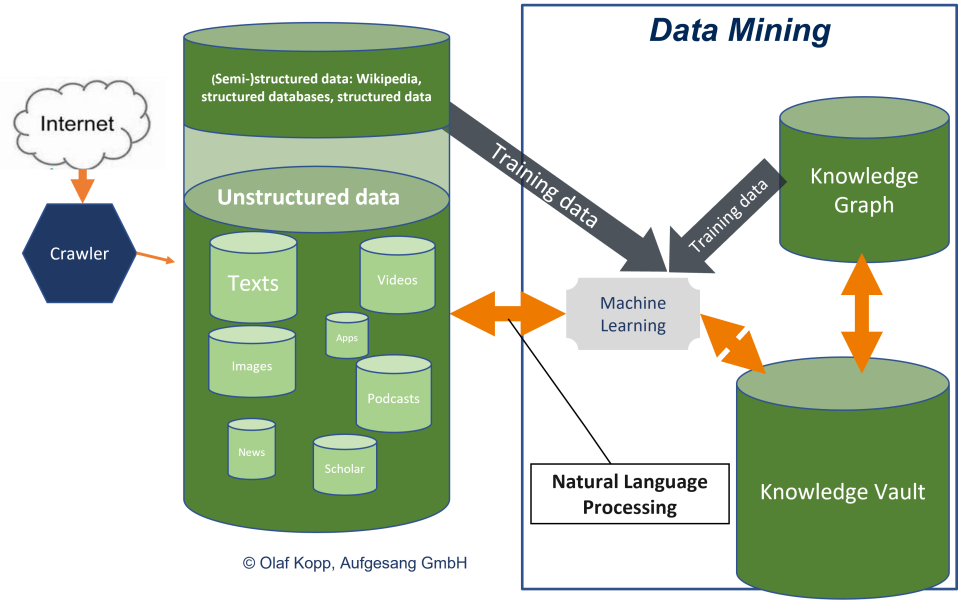
For the Google ranking is the Scoring Engine, a Entity- und Sitewide Qualifier and a Ranking Engine responsible. When it comes to ranking factors, Google distinguishes between search query-dependent (e.g. keywords, proximity, synonyms…) and search query-independent (e.g. PageRank, language, page experience…) ranking factors. I would still differentiate between document-related ranking factors and domain or entity-related ranking factors.
In the Scoring Engine a relevance assessment takes place at the document level in relation to the search query. At theEntity- und Sitewide Qualifier it is about the evaluation of the publisher and/or author as well as the quality of the content as a whole in relation to themes and UX of the website (areas).
The Ranking Engine brings together the score from the scoring engine and the entity and sitewide qualifier and ranks the search results.
A Cleaning Engine sorts out duplicate content and cleans search results from content that has received a penalty.
A Personalization Layer finally, factors such as the search history or, in the case of regional search intentions, the location or other local ranking factors are taken into account.

Does that sound logical? If so, I’m happy if you share the knowledge.
More posts on how Google works
Not enough? I have been working intensively with books, Google sources and Google patents on modern search engine technologies since 2014. Here is a selection of articles I have written about it:
- Series of articles semantic SEO (only german)
- All you should know as an SEO about entity types, classes and attributes
- How Google can identity and interpret entities from unstructured content
- Googles journey to a semantic search engine
- How Google can identify and rank relevant documents via entities, NLP & vector space analysis
- Insights from the the whitepaper “How Google fights misinformation” on E-A-T and Ranking
- What is semantic search: A deep dive into entity based search
- How Google uses NLP to better understand search queries, content
- Entities and E-A-T: The role of entities in authority and trust
- 14 ways Google may evaluate E-A-T
- Most interesting Google patents for SEO
Here are some other great ressources I found:
-
Google’s Algorithms Uncovered: How the Search Engine Works According to Leaked Documents
-
Google Navboost Algorithm: Enhancing Navigation for an Improved User Experience
- Ranking Results – How Google search works
- Interesting Google patents for search and SEO in 2024 - 3. April 2024
- What is the Google Shopping Graph and how does it work? - 27. February 2024
- “Google doesn’t like AI content!” Myth or truth? - 19. February 2024
- Most interesting Google Patents for semantic search - 12. February 2024
- How does Google search (ranking) may be working today - 4. February 2024
- Success factors for user centricity in companies - 28. January 2024
- Social media has become one of the most important gatekeepers for content - 28. January 2024
- E-E-A-T: Google ressources, patents and scientific papers - 24. January 2024
- Patents and research papers for deep learning & ranking by Marc Najork - 21. January 2024
- E-E-A-T: More than an introduction to Experience ,Expertise, Authority, Trust - 4. January 2024


